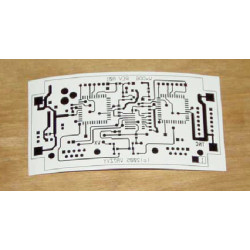The MQ series of gas sensors are a popular line of gas sensing modules widely used for detecting and measuring various gases in the environment. These sensors utilize a chemiresistor-based detection mechanism, where the electrical resistance of the sensing element changes in the presence of the target gas. Different models within the MQ series are designed to detect specific gases.
Here are a few examples of commonly used MQ gas sensors:
1. MQ-2: The MQ-2 gas sensor is used for detecting flammable gases such as methane, butane, propane, alcohol, and hydrogen. It is commonly employed in gas leak detection systems and fire safety applications.
2. MQ-4: The MQ-4 gas sensor is primarily used for detecting natural gas (methane). It is commonly found in gas leak detectors, home safety systems, and industrial gas detection systems.
3. MQ-5: The MQ-5 gas sensor is designed for detecting and measuring the concentration of liquefied petroleum gas (LPG), natural gas, and coal gas. It is commonly used in gas leak detectors, gas alarms, and gas concentration monitoring systems.
4. MQ-7: The MQ-7 gas sensor is used for detecting and measuring carbon monoxide (CO) gas. It is widely used in residential and commercial carbon monoxide detectors, as well as in automotive applications.
5. MQ-135: The MQ-135 gas sensor is designed to detect air quality and measure various gases, including ammonia (NH3), nitrogen oxides (NOx), benzene, smoke, and other harmful gases. It is commonly used in air quality monitoring systems and indoor air quality applications.
These are just a few examples from the MQ series, and there are many more models available, each tailored for specific gas detection requirements. It's important to refer to the datasheet and documentation provided by the sensor manufacturer for detailed information on operating characteristics, calibration, sensitivity, and recommended usage guidelines specific to the gas sensor you are working with.
-
Your shopping cart is empty!
-
Mixed Menu
New
Top Sellers
Heat transfer law making circuit boards, circuit board is drawn graphics, laser printers print in thermal transfer paper, and then covered in Bo..₹12.0When drilling holes in a printed circuit board (PCB) for electronic components, specific drill bits called PCB drill bits or PCB drills are used. Thes..₹10.2When drilling holes in a printed circuit board (PCB) for electronic components, specific drill bits called PCB drill bits or PCB drills are used. Thes..₹10.2When drilling holes in a printed circuit board (PCB) for electronic components, specific drill bits called PCB drill bits or PCB drills are used. Thes..₹10.2 - Blog
Gas MQ
The MQ series of gas sensors are a popular line of gas sensing modules widely used for detecting and measuring various gases in the environment. These sensors utilize a chemiresistor-based detection mechanism, where the electrical resistance of the sensing element changes in the presence of the target gas. Different models within the MQ series are designed to detect specific gases.
Here are a few examples of commonly used MQ gas sensors:
1. MQ-2: The MQ-2 gas sensor is used for detecting flammable gases such as methane, butane, propane, alcohol, and hydrogen. It is commonly employed in gas leak detection systems and fire safety applications.
2. MQ-4: The MQ-4 gas sensor is primarily used for detecting natural gas (methane). It is commonly found in gas leak detectors, home safety systems, and industrial gas detection systems.
3. MQ-5: The MQ-5 gas sensor is designed for detecting and measuring the concentration of liquefied petroleum gas (LPG), natural gas, and coal gas. It is commonly used in gas leak detectors, gas alarms, and gas concentration monitoring systems.
4. MQ-7: The MQ-7 gas sensor is used for detecting and measuring carbon monoxide (CO) gas. It is widely used in residential and commercial carbon monoxide detectors, as well as in automotive applications.
5. MQ-135: The MQ-135 gas sensor is designed to detect air quality and measure various gases, including ammonia (NH3), nitrogen oxides (NOx), benzene, smoke, and other harmful gases. It is commonly used in air quality monitoring systems and indoor air quality applications.
These are just a few examples from the MQ series, and there are many more models available, each tailored for specific gas detection requirements. It's important to refer to the datasheet and documentation provided by the sensor manufacturer for detailed information on operating characteristics, calibration, sensitivity, and recommended usage guidelines specific to the gas sensor you are working with.





























